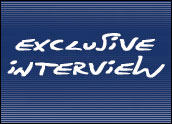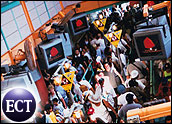
The global convenience retailer 7-Eleven Inc. is rolling out custom Hewlett-Packard technology in 5,300 U.S. locations. Both companies believe the partnership will transform convenience retailing, and some analysts agree.
Chris Selland, vice president of sell-side research at Aberdeen Group, told CRM Buyer that 7-Eleven’s decision to customize using HP was a long-range plan. “They’ll gain an advantage when they’re finished, not now,” he said, referring to both HP and 7-Eleven.
But the decision could prove revolutionary. “These guys are in a lousy industry,” with high costs and razor-thin profit margin. “If 7-Eleven really starts out-executing competitors to meet customer expectations,” Selland said, the company “could potentially change the game.”
Customizing with HP
According to Selland, the five-year, $55-million rollout of customized technology may succeed because it will answer 7-Eleven’s particular challenges: low margins, high-priced leases in urban neighborhoods and the commoditization of the convenience store industry.
“You often have operations-facing and customer-facing systems work because they are customized,” he said.
“This is not an argument of going against packaged solutions,” Selland added. When IT suppliers tout their packaged enterprise applications as less expensive, however, prospective buyers should recognize that while a smaller investment may yield a quicker return, “quicker isn’t always necessarily better.”
A customized enterprise application can win significant movement in sales figures. “7-Eleven wouldn’t do this if they believed that the benefit wouldn’t be significant,” he added.
7-Eleven Spruces Up
The fact that 7-Eleven is trying to overcome low margins and earnings — in 2003, the retail chain earned only $50 million on $10 billion in sales — points to a strong interest in strengthening the brand and the business.
“7-Eleven has been doing an awful lot of business improvement over the past few years, sprucing up stores, taking over the American Express ATM network a month ago and introducing a new vendor technology in March that enables suppliers to apply online to service 7-Eleven,” Selland said.
Selland said it was likely that IBM, Oracle, SAP and maybe even Sun bid on the deal that HP won. 7-Eleven did not comment on the matter.
7-Eleven clusters locations in concentrated groups of at least 200 stores — the minimum number of stores required to make (almost daily) centralized distribution viable. Prior to the HP technology adoption, the distribution network was there for 7-Eleven, but the networking was not.
PowerBars and Beef Jerky
7-Eleven already has improved service for its six million daily customers across the country, HP spokesperson Dayna Fried told CRM Buyer. Since implementation began earlier this month, store managers have run inventories and placed orders for new stock more quickly and easily than before the adoption of this, its first standard networking platform.
The new ability to track product movement off store shelves helps franchisees determine what to reorder.
And for the first time, 7-Eleven is customizing the product mix in its locations based on neighborhood demographics. Slow-moving items will not reappear. Precious shelf space will be taken over by PowerBars in California or multiple beef jerky products in the Midwest.
A typical 7-Eleven store, carrying about 2,500 different items, can now better tailor its inventory to meet customer demand — increasing sales, accelerating movement of goods and ensuring return on this IT investment.
Simply Better
Patrick Barwise, professor of management and marketing at London Business School, agreed. 7-Eleven can win by doing what it does — convenience retailing — better, without developing a unique selling proposition, competing on price or finding obscure products to sell.
7-Eleven won’t even have to advertise, a tactic that likely attracts little attention from consumers interested primarily in convenience.
In the United Kingdom, the wireless phone provider Orange did something similar, Barwise said. It, too, occupies a place in a very commoditized category, but it focuses on delivering generic category benefits at a fair price. It’s “not the cheapest,” Barwise said. “It can be the most expensive and still the most popular because it’s perceived as the most value for the money. It’s seen as being on the customer’s side.”
Technology and Turnaround
The HP technology includes servers, storage, networks and printing devices. HP will provide support and Web-based training to 7-Eleven franchisees as well, an important part of the package given the high turnover of 7-Eleven employees. Store staff can access the virtual education any time from a back room in their convenience mart. Store operators use in-store computers to reorder best-selling inventory and remove slow-moving items from store shelves.
This reduces operations costs in two ways: Staff will contribute to the efficiency of the application because they know how to use it. They will learn, for instance, how important it is for the point-of-sale device to read a UPC barcode rather than receive a keyed-in price without category or brand identification.
The HP application supports 7-Eleven’s Retail Information System. It will not, however, be linked to 7-Eleven’s ATM network, recently purchased from American Express.
In addition, 7-Eleven corporate won’t have to encourage store managers to train its employees. Such support is cost-prohibitive because it involves travel to a physical learning center. Now counter workers will train in-store and likely stay with the retailer longer because they’ll have the information with which to perform better and more consistently.




















































